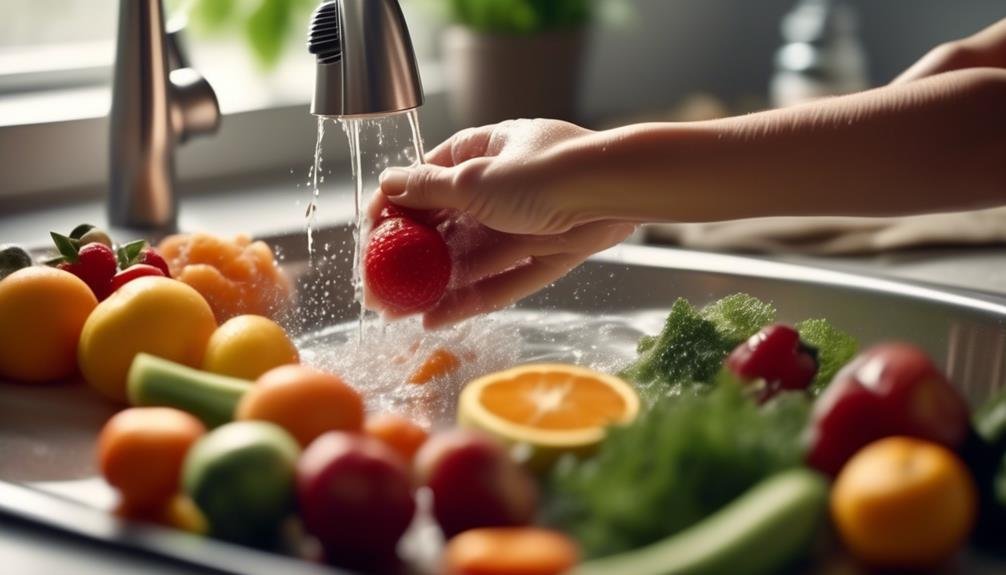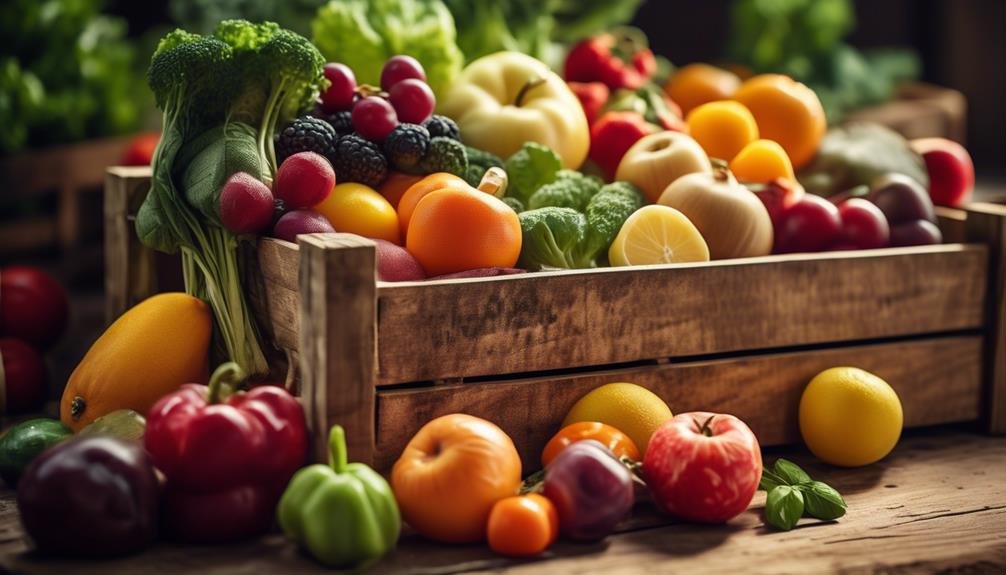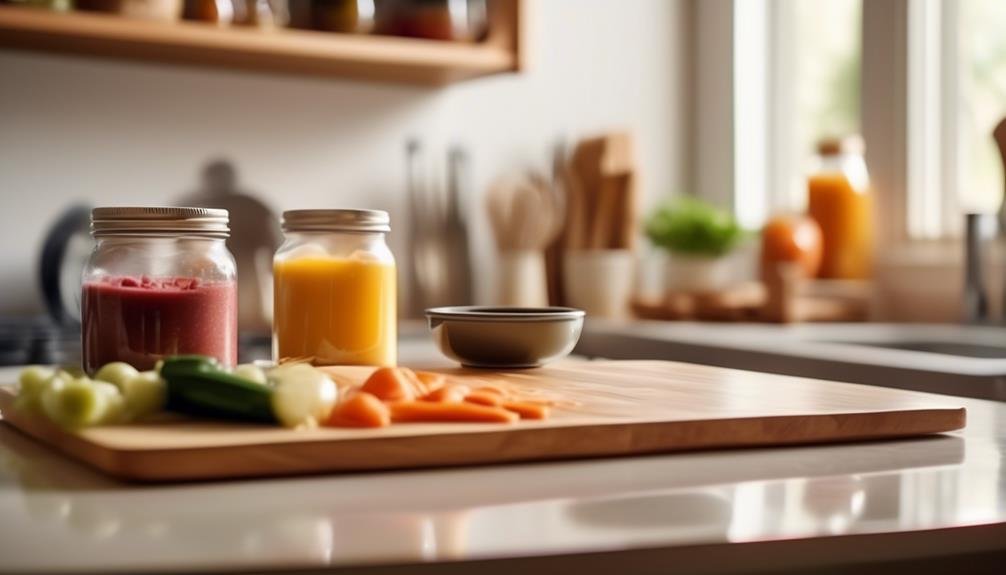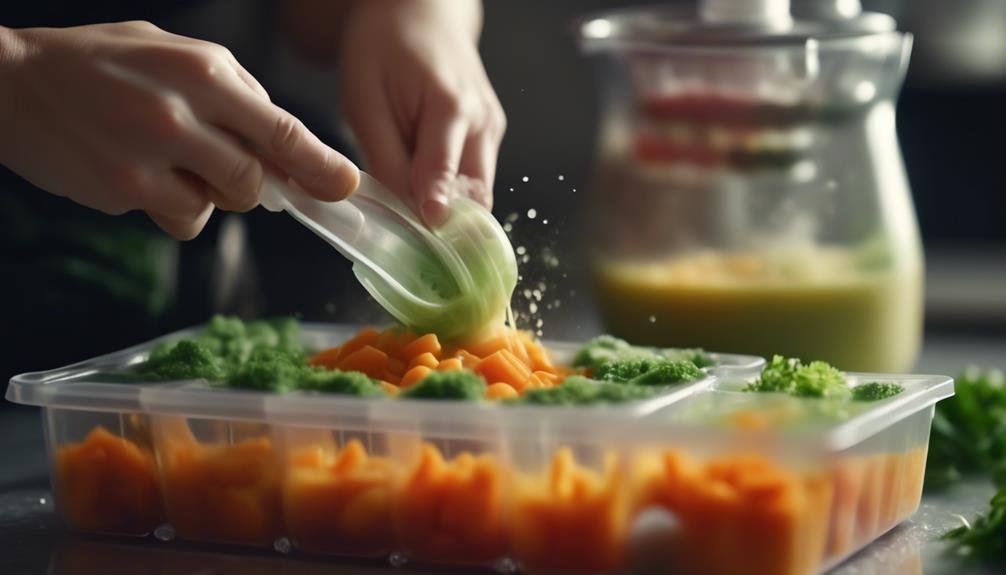Safe Cooking for Baby Food
Did you know that according to the Centers for Disease Control and Prevention, approximately 48 million people in the United States get sick from foodborne illnesses each year? When it comes to your little one, ensuring the safety of their food is of utmost importance.
But how can you make sure that you are cooking baby food in the safest way possible? In this discussion, we will explore essential tips and techniques for safe cooking, from proper cleaning and sanitization to choosing fresh ingredients and avoiding cross-contamination.
So, let's dive in and discover how you can give your baby the healthiest and safest start to their culinary journey.
Key Takeaways
- Steam food to an internal temperature of at least 165°F (74°C).
- Wash hands thoroughly with warm water and soap.
- Use separate cutting boards and utensils for different food items.
- Thaw frozen baby food in the refrigerator or in warm water.
Importance of Safe Baby Food Preparation

Ensuring the safety of your baby's food preparation is of utmost importance. As a parent, you want to provide the best nutrition for your little one, and homemade baby food is a great way to do that. Not only does it allow you to control the ingredients, but it also ensures the nutritional value of the food. When you make baby food at home, you can choose fresh fruits, vegetables, and grains that are rich in vitamins, minerals, and antioxidants. These nutrients are essential for your baby's growth and development.
Another approach to introducing solid foods to your baby is through baby led weaning. This method encourages self-feeding and allows your baby to explore different textures and tastes at their own pace. By offering finger foods and allowing your baby to feed themselves, you're promoting independence and fine motor skills development. Baby led weaning also helps your little one develop a healthy relationship with food and encourages them to listen to their own hunger and fullness cues.
Whether you choose to make homemade baby food or try baby led weaning, it's crucial to follow safe food preparation practices. Always wash your hands and sanitize all utensils and surfaces before cooking. Cook food thoroughly and ensure it's the right temperature before serving. By prioritizing food safety, you can provide your baby with nutritious and safe meals that support their growth and development.
Proper Cleaning and Sanitization of Kitchen Equipment
To ensure the safety of your baby's food, it is important to properly clean and sanitize your kitchen equipment. Cleaning techniques and proper equipment maintenance are crucial in preventing the growth of harmful bacteria and ensuring the health of your little one. Here are some tips to keep your kitchen equipment clean and sanitized:
| Equipment | Cleaning Technique | Frequency |
|---|---|---|
| Blender | Disassemble and wash all parts with warm, soapy water. Rinse thoroughly. | After each use |
| Cutting boards | Wash with hot, soapy water and scrub with a brush. Rinse thoroughly. | After each use |
| Utensils | Wash with hot, soapy water. Pay special attention to crevices and corners. Rinse thoroughly. | After each use |
Regular maintenance of your kitchen equipment is also essential for safe food preparation. Here are some tips to keep your equipment in good condition:
- Follow manufacturer's instructions for cleaning and maintenance.
- Inspect equipment for any signs of wear or damage regularly.
- Replace any worn-out or damaged parts immediately.
Choosing and Storing Fresh Ingredients

Now that you have ensured the cleanliness and sanitization of your kitchen equipment, let's move on to the important task of selecting and properly storing fresh ingredients for your baby's food.
When it comes to choosing and storing fresh ingredients for your baby's food, following proper food handling practices is crucial to maintain the nutritional benefits. Here are some tips to help you make the best choices for your little one:
- Opt for organic produce whenever possible. Organic fruits and vegetables are grown without the use of harmful pesticides, making them a safer choice for your baby's delicate system.
- Look for locally sourced ingredients. Locally grown produce is often fresher and retains more nutrients compared to those that have been transported long distances. Plus, supporting local farmers is always a great idea!
- Check for ripeness and freshness. Choose fruits and vegetables that are firm, vibrant, and free from bruises or blemishes. This ensures that your baby gets the maximum nutritional value from their food.
Once you've selected your fresh ingredients, it's important to store them properly to maintain their quality. Store fruits and vegetables in the refrigerator to keep them fresh for longer. Remember to wash them thoroughly before use, even if they'll be cooked.
Safe Cooking Temperatures for Baby Food
To ensure the safety of your baby's food, it's important to cook it at the appropriate temperatures. Cooking methods play a crucial role in maintaining the nutritional needs of your little one. When preparing baby food, it's essential to cook it thoroughly to eliminate harmful bacteria and ensure your baby's health.
Different cooking methods require different temperatures to ensure safe food preparation. When steaming, make sure the food reaches an internal temperature of at least 165°F (74°C). Boiling is another popular cooking method for baby food, but be cautious not to overcook the ingredients, as it may result in nutrient loss. Aim for a temperature of around 212°F (100°C) when boiling.
For baking or roasting, it's recommended to cook the food at a temperature between 350°F (175°C) and 375°F (190°C). This ensures that the food is cooked evenly and thoroughly. Grilling is a great cooking method that adds flavor to baby food, but remember to monitor the internal temperature of the food, aiming for at least 165°F (74°C).
Avoiding Cross-Contamination During Preparation

To maintain the safety of your baby's food, it's crucial to prevent cross-contamination during the preparation process. Cross-contamination occurs when harmful bacteria from one food item spreads to another, leading to potential illness. Here are some simple steps you can take to prevent bacteria growth and ensure proper food handling:
- Wash your hands: Before preparing your baby's food, make sure you wash your hands thoroughly with warm water and soap. This helps eliminate any bacteria that may be present on your hands.
- Clean utensils and surfaces: Clean all cutting boards, knives, and other utensils with hot, soapy water before and after each use. Additionally, regularly sanitize countertops and other food preparation surfaces.
- Separate raw and cooked foods: Keep raw and cooked foods separate to avoid cross-contamination. Use separate cutting boards and utensils for raw meats, fruits, and vegetables. This simple step can help prevent the spread of harmful bacteria.
Best Practices for Freezing and Reheating Baby Food
How can you safely freeze and reheat baby food to maintain its quality and ensure it's safe for your little one?
Proper freezing techniques and reheating methods are key to preserving the nutritional value and taste of homemade baby food. When freezing baby food, use airtight containers or freezer-safe bags to prevent freezer burn and maintain freshness. Leave some space at the top of the container to allow for expansion during freezing. Label each container with the date and type of food to keep track of its freshness.
To thaw frozen baby food, transfer it from the freezer to the refrigerator and let it defrost overnight. Alternatively, you can place the frozen food container in a bowl of warm water to speed up the thawing process.
When reheating baby food, always use a microwave-safe dish or stovetop to ensure even heating. Stir the food well to distribute heat and test the temperature before serving to your baby. Remember to discard any leftover food that has been reheated to prevent bacterial growth.
Frequently Asked Questions
How Do I Introduce Solid Foods to My Baby?
When introducing solid foods to your baby, start with simple purees like mashed fruits and vegetables. As they get older, gradually introduce soft, easily chewable foods. Transitioning from purees to solids can be done by offering small, bite-sized pieces for them to explore and self-feed.
Can I Use the Same Cutting Board for Different Ingredients When Preparing Baby Food?
Yes, you can use the same cutting board for different ingredients when preparing baby food, but it's important to be mindful of cross contamination risks. Make sure to properly clean the cutting board between uses to ensure your baby's safety.
What Is the Shelf Life of Homemade Baby Food?
The shelf life of homemade baby food can vary depending on the ingredients used and how it is stored. It is recommended to consume within 1-3 days or freeze for up to 3 months for optimal freshness.
Can I Use a Microwave to Heat up Baby Food?
Using a microwave to heat up baby food is convenient, but it's important to prioritize safety. Microwaves can heat unevenly, causing hot spots that could burn your baby's mouth. Always stir and test the temperature before feeding.
Are There Any Specific Herbs or Seasonings That Are Safe to Add to Baby Food?
You can safely add certain herbs and seasonings to baby food. They can enhance the flavor and provide nutritional benefits. Just make sure to use safe herbs for baby food and introduce them gradually to avoid any potential allergies.
Conclusion
In conclusion, ensuring safe cooking for baby food is of utmost importance.
Just like a delicate flower needs gentle care to bloom, our little ones require proper hygiene and sanitation to thrive.
By following the guidelines for cleaning, choosing fresh ingredients, cooking at safe temperatures, and avoiding cross-contamination, we can create healthy and nutritious meals for our babies.
Let's remember that their well-being is in our hands, and by taking these precautions, we can provide them with a strong foundation for a lifetime of good health.








